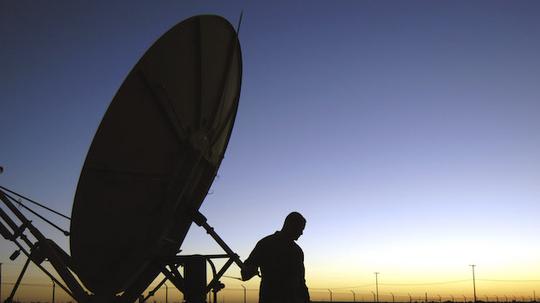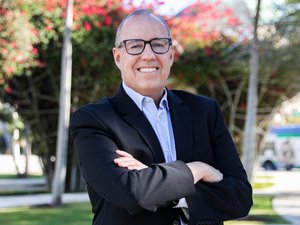
There's more to the D.C. tech scene than the company perks or the people who found them. Often overlooked, the D.C. tech community's essence is, clearly, in the technology powering the region's startups. In "Under the Hood," DC Inno delves into the tech behind some of the region's companies and startups.
Ligado isn't exactly a startup.
The Reston, Va.-based company traces its roots back to 1988. It's about 125 employees strong. It's been known by multiple names in its lifetime.
But you might only know it for one: LightSquared—the name it had during a 2013 lawsuit against Deere & Co. and two others claiming their equipment interfered with LightSquared's satellite system. It's also the same name it had when it filed for bankruptcy in 2012 after a deal with Sprint Nextel fell through, and they could no longer make their loan payments.
But the company’s branding, and narrative, has started to change, as it's spent the past 18 months in stealth mode, of sorts, trying to figure out how to best restructure its resources to make an almost far-off dream a reality. The dream? To make connections more reliable for autonomous vehicles and drones in a new program called the Advanced Satellite-Terrestrial Network.
For those not in the industry, let me explain what exactly that means with an example: One industry Ligado is targeting is the rail industry. With a portion of railways using unmanned aerial systems to inspect railroads for safety issues, the industry relies on Ligado's network to reach places that other satellites just can't seem to cover. "By combining our satellite capabilities with a ground base network, we can make that continual secure and reliable connectivity available to UAS operators," said Ligado's Chief Technology Officer Tamara Casey in an interview with DC Inno.
Combining both satellite and on-the-ground networks allows Ligado's satellite technology to reach more places that other purely satellite tech devices can't reliably reach.
Got it?
The tech also isn't limited to railway systems, and Ligado is definitely thinking big. Think autonomous cars, drones and various oil and gas industry tools.
"It allows us to expand our current set of satellite offerings in a unique and robust way that, based on our interactions with these industries, they are are really excited about," Casey said.
Right now, though, Ligado is still awaiting approval from the FCC, which regulates all satellite technology capabilities. As with most regulatory processes, it's hard to know when approval will come. Until then, Ligado is working hard to get things ready for launch whenever approval arrives.
Now, Ligado knows a thing or two about FCC hurdles. The company, which at the time was called LightSquared, filed for Chapter 11 bankruptcy protection in 2012 after trying to launch a broadband network on contested airwaves, The Wall Street Journal reports. Several companies at the time filed complaints saying that LightSquared's technology would interfere with the Global Positioning System, or GPS, they relied on. In 2015, the company rebranded as Ligado and emerged from bankruptcy. Now, it's moving forward with a new plan.
"Necessity is the mother of innovation in a lot of instances, but that's true for Ligado, as well," said the company's Chief Legal Officer Valerie Green in an interview with DC Inno.
To ensure that they weren't interfering with GPS technology, Ligado has to lower its transmission power, and it has relinquished the right to the spectrum closest to GPS to create a guard for it. Those barriers forced Ligado to look at the tech leftover: What can we do with this? How would it work?
In comes the idea to combine their satellite technology with terrestrial services, Green said.
"We realized that we could boost the capacity of the satellite network by adding terrestrial capacity, and we could enhance the reliability of the terrestrial network by tying it to our satellite network," Green said. "So if you have technology that relies on both, you get the best of both worlds, and also a level of redundancy that any system that is exclusively satellite and exclusively terrestrial can't provide."
The team is optimistic about FCC approval. They have support from both sides of the aisle on Capitol Hill. Industry leaders who would be impacted by the tech love the idea. The company is ready to invest hundreds of millions of dollars in creating new jobs around the technology.
"We're ready to get started on that right away," Green said. "It does take 3-15 years to build an entire terrestrial network, but we will get started right away building a custom network based on the individual needs of our customers."
On top of all of that, the solution is a work around for the spectrum shortage, where spectrum is a electromagnetic resource auctioned off by the FCC to different services to transmit signals over the specific bands.
"It's an exciting time for a company like ours, making our vision a reality," Green said.
Photo credit: U.S. Air Force photo/Staff Sgt. Sarayuth Pinthong




